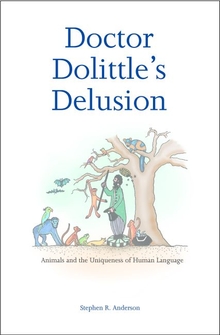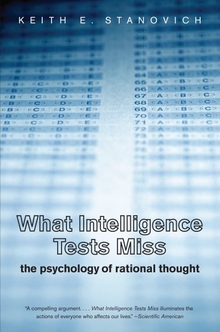Doctor Dolittle’s Delusion
WARNING
You are viewing an older version of the Yalebooks website. Please visit out new website with more updated information and a better user experience: https://www.yalebooks.com
Animals and the Uniqueness of Human Language
Stephen R. Anderson; With illustrations by Amanda Patrick
Can animals be taught a human language and use it to communicate? Or is human language unique to human beings, just as many complex behaviors of other species are uniquely theirs? This engrossing book explores communication and cognition in animals and humans from a linguistic point of view and asserts that animals are not capable of acquiring or using human language.
"In this enjoyable and informative book, Stephen Anderson incisively states the way that diverse areas of study have helped illuminate the question of communication by animals and our communication with them."—Diane Brentari, Purdue University
“This book is ideal for any cognitive science class. The fact that I include bees, dolphins and primates in my course is due to Steve Anderson.”—K. David Harrison, Department of Linguistics, Swarthmore College
"If Dr. Dolittle had met Charles Darwin, they would have shared two things in common: an extraordinary love of animals and a deep belief in the continuity of human and animal communication. In this book, the distinguished linguist Stephen Anderson challenges Dolittle and Darwin’s belief in the continuity claim, arguing that our capacity for language generates a uniquely designed system of communication, unparalleled in the history of life on earth. Written in a playful and highly accessible style, Anderson navigates some of the difficult territory of linguistics to provide an illuminating discussion of the evolution of language.”—Marc Hauser, Harvard College Professor and Professor of Psychology, Harvard University; author of Wild Minds: What Animals Really Think
“This deeply informed and lucid book not only is an outstanding introduction to human language and to animal communication, but also identifies clearly and persuasively essential properties that distinguish them, and the enormous significance of these properties for human thought and life.”—Noam Chomsky, Institute Professor, Department of Linguistics and Philosophy, MIT
"A terrific read, informative, judicious, and timely."—Norbert Hornstein, University of Maryland
“An accessible and enjoyable introductory book with extensive coverage of the ever-fascinating domain of animal communication and human language, from both a cognitive and linguistic perspective. . . . [An] excellent book.”—Choice
“A thorough analysis. . . . Well researched and highly organized. . . . Highly recommended for all academic libraries.”—Library Journal
“Reading Anderson’s book is a highly satisfying experience. . . . The book as a whole is very readable. For a user-friendly introduction to animal communication and the uniqueness of the human language, one can hardly do better than read Anderson.”—Anne Reboul, Linguist List
"A masterly overview of what is currently known about the communicative abilities of a wide range of creatures. . . . Anderson's synthesis provides illuminating comparisons with the infinitely more sophisticated resources of human language. . . . [An] elegant book."—Neil Smith, Nature
"This is a very well-written, well-argued, and provocative book about the evolution of human language. It is strongly interdisciplinary. . . . I enjoyed this book and recommend it to anyone interested in animal communication and the evolution of language. Agree or disagree, this volume will make readers think deeply about the evolution of human language, where it came from, and what the data from animal studies really mean."—Marc Bekoff, Quarterly Review of Biology
“This book is a gem. Anderson clearly articulates what makes human language truly unique among systems of communication. This is a must read.”—Cedric Boeckx, Harvard University
Publication Date: May 30, 2006
68 b/w illus.








